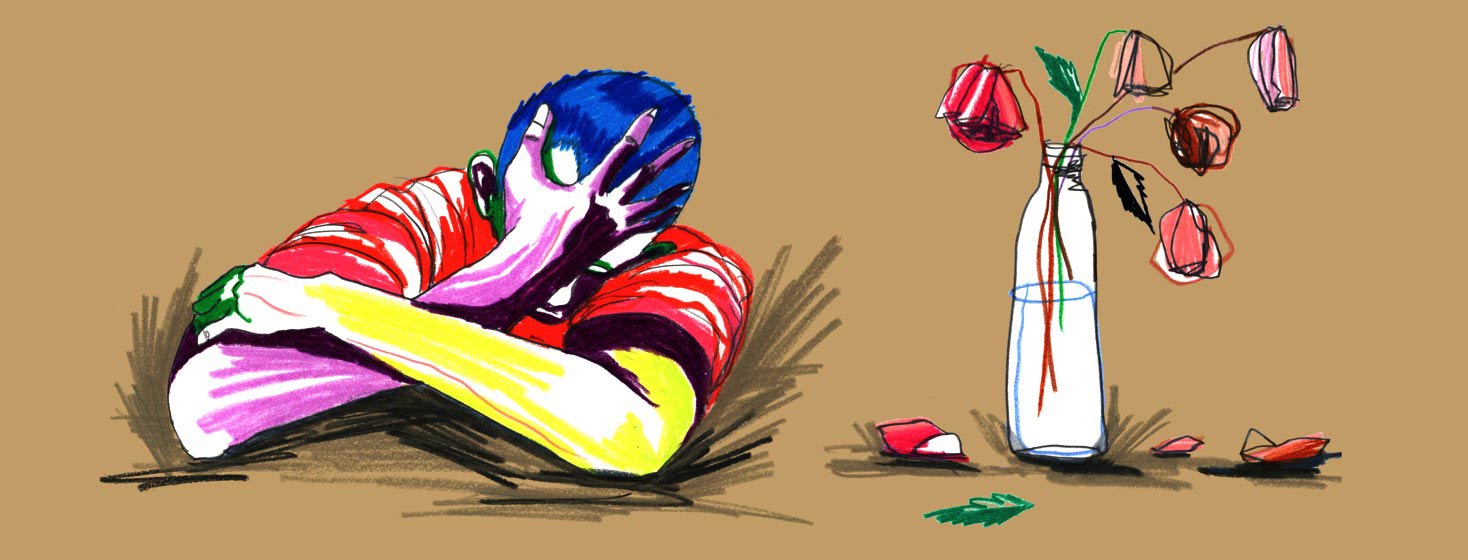9 Things People With Chronic Migraine Want You to Know
There are at least 9 things those of us living with chronic migraine want you to know.
Number 1
Chronic migraine is not the same as chronic pain. Migraine is known for causing severe head pain, but it also causes a constellation of other neurological symptoms that can be felt throughout the body. For some people, these non-pain symptoms, like severe nausea and vomiting, cognitive dysfunction, and fatigue, are more disabling than the pain. Even though the pain is usually bad (though some of us have no pain at all), it's likely not the only disabling symptom a person with chronic migraine has.
Number 2
Chronic migraine may not mean a person has a migraine every day, but some of us do. The official definition of chronic migraine is 15 headache days a month, at least eight of which are migraine. Someone with chronic migraine is lucky to get a week between attacks; usually, it's a day or two. Some people with chronic migraine get no break at all — either they have a never-ending migraine attack or attacks are triggered so frequently that they stack up on top of each other.
Number 3
Chronic migraine is one of the most disabling of all medical conditions. No, I didn't make that up. The World Health Organization analyzed the burden of 135 diseases worldwide. Of these diseases, migraine ranks in the top 20 of most years lost to disability.1 Researchers ranked severity of disability in seven levels. Diseases that exemplify the highest level include active psychosis, severe depression, severe migraine, quadriplegia, terminal stage cancer.2
Number 4
Being out of the house doesn't necessarily mean that a chronic migraineur feels OK. Research shows that people with more migraine days a month report less migraine-related impairment than those with fewer days a month.3 This may seem counterintuitive, but it makes sense when you know how hard people with chronic migraine push themselves during migraine attacks. It's not that people with chronic migraine have less painful attacks than those with episodic migraine. It's because if we don't push ourselves, we'll rarely leave the house. We often exceed our bodies' limits so we can earn a living, go to our kids' soccer games, or have some semblance of a social life. And we often pay the price with a horrendous migraine attack.
Number 5
When we stay in bed, it's because we have to. People with chronic migraine can sometimes push through attacks and sometimes can't. When we can't, it's because we are physically incapable of doing anything else. This doesn't mean we're "giving in" to migraine or letting it control our lives. This is not a function of mind over matter. If we could push through the migraine attack, we would. If we could live normal lives, we would. Healthy people with hectic lives sometimes say that lying in bed most of the time would be a luxury. I'm not sure how spending day after day in horrible pain, barely able to move, unable to think, too nauseous to eat, and vomiting one's guts up could ever be thought of as a treat.
Number 6
The sensory overload associated with chronic migraine means we may not be able to go to a concert, bar, or NFL game with you. All five senses that you learned about in elementary school — sight, sound, touch, taste, smell — are heightened during a migraine attack. For people with episodic migraine, these senses settle down between attacks. That's not the case for people with chronic migraine.4 Not only are we hyperaware of sensory input, but our brains are also so hyperreactive to it that odors, lights, and noise can trigger more migraine attacks.
Number 7
Finding an effective medication is not the same as being cured. There is no cure for migraine. There are effective treatments, but it can be hard to find the best treatment for each individual. Even then, treatments often provide a small amount of relief, requiring a combination of multiple medications, supplements, and/or therapies to provide substantial relief. Someone with chronic migraine can be over the moon about finding an effective medication — even when "effective" means that it reduces the pain one notch on a 0-10 scale. This tiny bit of relief can feel miraculous, but it doesn't necessarily translate into increased functionality.
Number 8
Chronic migraine is exhausting. Imagine a job that you could never leave, not even for a short vacation. A job that is on your mind every moment of every day. A job that wakes you up in the middle of the night demanding attention. A job that causes severe physical and mental anguish, wreaking havoc on your body and life. Now imagine having to do another job on top of that, like raising children or holding down a paying job. And add another job on top of that, one that requires hours of doctor's appointments and treatments, pharmacy trips, fighting with health insurance companies, and research each week. The physical symptoms are enough to cause exhaustion. Add all the other responsibilities on top of it, and we're pretty well wrecked.
Number 9
Having chronic migraine is not a choice. We do not have chronic migraine to shirk responsibilities or get attention. We don't spend our days eating bon-bons and mucking around on Facebook. We can't think or pray our way out of chronic migraine. All the positive thoughts in the world will not make chronic migraine go away. You have no idea how much we wish they could.

Join the conversation